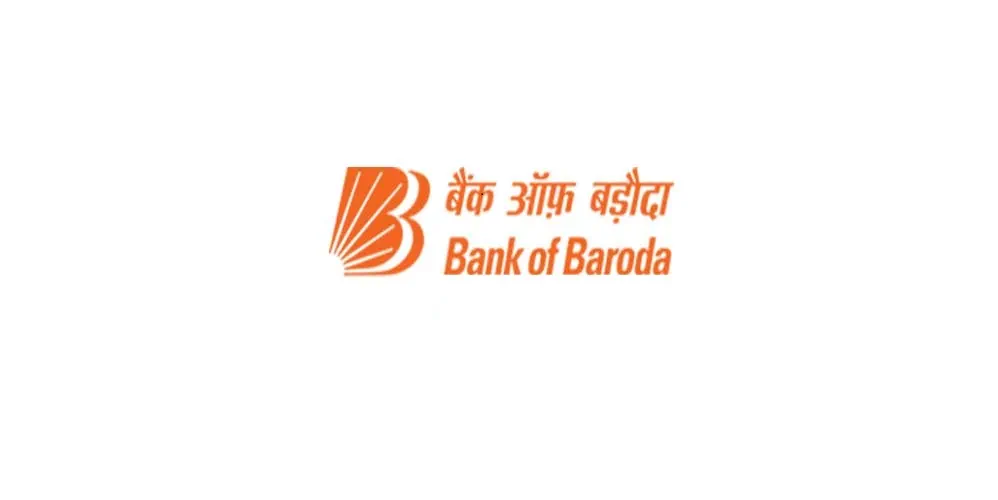
कृषि ऋण प्राप्त करने संबंधी निर्देशिका : आवेदन, पात्रता और आवश्यक दस्तावेज
27 जून 2023

Table of Content
Introduction
Agriculture is the backbone of the Indian economy, contributing significantly to its GDP and employing a large portion of the population. However, farmers often face financial challenges due to factors such as unpredictable weather conditions, high input costs, and limited access to capital. To support farmers and promote agricultural growth, the Indian government and financial institutions offer Agriculture Loan with attractive interest rates, various schemes, and eligibility criteria tailored to the needs of farmers. In this blog, we will explore the details on how to get agriculture loan, the applicable interest rates, schemes guidelines, eligibility requirements, documents required.
Interest Rates for Agriculture Loans
Interest rates for agriculture loans in India vary depending on the financial institution, profile of the borrower, creditworthiness, loan amount, and purpose. The Reserve Bank of India (RBI) provides guidelines to banks regarding the interest rates they can charge on agriculture loans which are backed by interest subvention from the Govt. These rates are usually lower compared to commercial loans, aiming to make credit more affordable for farmers. The interest rates are generally linked with MCLR and BRLLR can range from 4% to 14% per annum, depending on the types of loan and the repayment period.
Agriculture Loan Eligibility Criteria
While specific eligibility criteria may vary across financial institutions, schemes and conduct of the existing portfolio, some common requirements for agriculture loans in India include:
- Land Ownership: Farmers should have clear ownership of agricultural land or possess leasehold rights for a minimum period specified by the lending institution. The land is often used as collateral for the loan. In case of unavailability of land ownership, it is preferred to lend in groups by forming JLGs and SHGs.
- Age: Most institutions require the farmer to be at least 18 years old to apply for an agriculture loan. Some schemes may have specific age-related eligibility criteria.
- Credit History: Financial institutions typically consider the credit history of the applicant to assess their credit worthiness. A good credit score enhances the chances of loan approval.
- Farming Experience: Banks may require farmers to have a minimum number of years of experience in agriculture to qualify for loans. This criterion varies depending on the type of loan and the institution.
- Repayment ability: Banks check on the income generated from the proposed activity and the surplus income available in hand of borrower for checking the repayment anility.
- Collateral Security coverage: For loans up to a certain limit viz. Rs 1.6 lakhs, banks does not insist for any collateral security requirement. However, for loans higher than this amount, it is preferred to mortgage / create charge / lien the agricultural land on which the activity is proposed. For the allied agriculture activity based loans, borrowers can avail credit guarantee under CGFMU for collateral free loans. For certain borrowers, who are classified as MSMEs or FPOs, there is also provision for payment of credit guarantee fee for availing collateral free loans.
- Document submission: Applicants need to provide relevant documents such as identity proof, address proof, land ownership documents, income certificates, bank statements and proposed activities to support their loan application.
How to Apply for an Agriculture Loan
Access to finance is crucial for farmers in India to support and expand their agricultural activities. Agriculture loans provide the necessary financial assistance for purchasing machinery, seeds, fertilizers, and other inputs. If you're a farmer looking to apply for an agriculture loan in India, this blog post will guide you through the application process step by step.
Step 1: Identify Your Financial Requirements:
Before applying for an agriculture loan, determine the specific financial needs of your farming operations. Assess the amount required for purchasing equipment, seeds, livestock, or land, as well as other expenses related to farming activities. Having a clear understanding of your financial requirements will help you choose the right loan product and approach the appropriate financial institution.
Step 2: Research Loan Schemes and Institutions:
India offers several loan schemes for farmers, each with its own set of eligibility criteria, interest rates, and benefits. Research and identify the loan schemes that best suit your needs. Some popular loan schemes in India include the Kisan Credit Card (KCC), Pradhan Mantri Fasal Bima Yojana (PMFBY), Gold Loan , Solar Pump loans , Dairy loans, Allied Agricultural loans, SHG loans , and various schemes offered by the National Bank for Agriculture and Rural Development (NABARD). Additionally, explore the offerings of different financial institutions such as public sector banks, cooperative banks, and regional rural banks that offer agriculture loans.
Step 3: Gather Necessary Documents:
To apply for an agriculture loan, you will need to gather specific documents that vary depending on the loan scheme and financial institution. The documents required for agriculture loans includes:
- Identity proof (Aadhaar card, PAN card, Voter ID, etc.)
- Address proof (Electricity bill, ration card, passport, etc.)
- Land ownership documents or land-related agreements
- Income proof (Income tax returns, bank statements, etc.)
- Crop details, including cultivation plans and expected yields (if applicable)
It is advisable to check with the chosen financial institution or loan scheme for a comprehensive list of required documents.
Step 4: Approach the Financial Institution:
Once you have identified the loan scheme and financial institution, visit the nearest branch or contact the respective bank or lender to initiate the loan application process. Alternatively, many financial institutions offer online application facilities, allowing you to apply for an agriculture loan from the comfort of your home.
Step 5: Complete the Application Form:
Fill out the agriculture loan application form accurately, providing all the required details and supporting documents. Ensure that you double-check the information provided to avoid any errors or delays in the processing of your application.
Step 6: Loan Processing and Approval:
After submitting the application form and supporting documents, the financial institution will begin the loan processing and verification process. This includes evaluating your eligibility, assessing the collateral (if applicable), conducting credit checks, and verifying the authenticity of the provided information. The processing time may vary depending on the financial institution and loan scheme.
Step 7: Loan Disbursement and Repayment:
If your loan application is approved, the financial institution will disburse the sanctioned loan amount to your bank account. Familiarize yourself with the loan repayment terms, including interest rates, repayment tenure, and installment amounts. It is essential to adhere to the repayment schedule to maintain a good credit history and avoid penalties.
To apply for agriculture loans online, you need to visit the website of Bank of your choice and apply for agriculture loan as per your requirement. For your interest in applying loans with any branch of Bank of Baroda , you may Click here and fill the necessary details.
Conclusion
Agriculture loans play a crucial role in providing financial assistance to farmers in India, enabling them to invest in their agricultural activities, purchase machinery, and manage their working capital. With favorable interest rates, government schemes, and tailored eligibility criteria, agriculture loans have become more accessible and farmer-friendly. However, it is important for farmers to carefully analyze their financial needs, compare loan offerings from different institutions, and understand the terms and conditions before applying for a loan. By leveraging the benefits offered by agriculture loans, farmers can improve their agricultural practices, increase productivity, and contribute to the overall growth of the sector, ultimately leading to a prosperous and sustainable agricultural landscape in India. Applying for an agriculture loan in India can be a significant step in securing the financial support required for farming activities. By following these steps and ensuring that you fulfill the eligibility criteria and provide the necessary documents, you can increase your chances of a successful loan application. Remember to carefully assess your financial requirements, research available loan schemes, and choose a reputable financial institution that aligns with your needs and goals.
Popular Articles
Related Articles



What is CVV on a Debit Card? Understanding Its Importance and Security Features


How to Update Your FASTag KYC: Step-by-Step Guide for Online & Offline Methods




The Importance of Pension Funds: Secure Your Future with Steady Retirement Income

-
डिस्क्लेमर
इस लेख/इन्फोग्राफिक/चित्र/वीडियो की सामग्री का उद्देश्य केवल सूचना से है और जरूरी नहीं कि यह बैंक ऑफ बड़ौदा के विचारों को प्रतिबिंबित करे। सामग्री प्रकृति में सामान्य हैं और यह केवल सूचना मात्र है। यह आपकी विशेष परिस्थितियों में विशिष्ट सलाह का विकल्प नहीं होगा । बैंक ऑफ बड़ौदा और/या इसके सहयोगी और इसकी सहायक कंपनियां सटीकता के संबंध में कोई प्रतिनिधित्व नहीं करती हैं; यहां निहित या अन्यथा प्रदान की गई किसी भी जानकारी की पूर्णता या विश्वसनीयता और इसके द्वारा उसी के संबंध में किसी भी दायित्व को अस्वीकार करें। जानकारी अद्यतन, पूर्णता, संशोधन, सत्यापन और संशोधन के अधीन है और यह भौतिक रूप से बदल सकती है। इसकी सूचना किसी भी क्षेत्राधिकार में किसी भी व्यक्ति द्वारा वितरण या उपयोग के लिए अभिप्रेत नहीं है, जहां ऐसा वितरण या उपयोग कानून या विनियमन के विपरीत होगा या बैंक ऑफ बड़ौदा या उसके सहयोगियों को किसी भी लाइसेंसिंग या पंजीकरण आवश्यकताओं के अधीन करेगा । उल्लिखित सामग्री और सूचना के आधार पर किसी भी वित्तीय निर्णय लेने के लिए पाठक द्वारा किए गए किसी भी प्रत्यक्ष/अप्रत्यक्ष नुकसान या देयता के लिए बैंक ऑफ बड़ौदा जिम्मेदार नहीं होगा । कोई भी वित्तीय निर्णय लेने से पहले अपने वित्तीय सलाहकार से सलाह जरूर लें।
कृषि भूमि की खरीद हेतु ऋण कैसे प्राप्त करें ?
कृषि सदियों से भारत की अर्थव्यवस्था का आधार स्तम्भ रहा है और अपने राष्ट्रवासियों को खाद्यान्न मुहैया कराने में देश के किसानों की भूमिका काफी महत्वपूर्ण रही है. यदि आप कृषि कार्य से जुड़ना चाहते हैं और भारत में कृषि भूमि के स्वामी बनाना चाहते हैं, मगर आपके पास इसके लिए आवश्यक धनराशि नहीं है तो आपके लिए एक अच्छी खबर है. कृषि ऋण की उपलब्धता के साथ, अब आप अपनी खेती के सपनों को साकार कर सकते हैं, इसके लिए आवश्यक भूमि का अधिग्रहण कर सकते हैं. इस ब्लॉग में, हम भारत में कृषि ऋण के विभिन्न पहलुओं की जानकारी देते हुए यह सूचित करेंगे कि यह इस संबंध में आपके द्वारा किए जाने वाले प्रयासों में किस प्रकार सहायक हो सकते हैं. कृषि भूमि की खरीद हेतु प्रदत्त ऋण भारत में संभावित किसानों के लिए उपलब्ध सर्वोत्तम मूल्य प्रस्तावों में से एक होता है.
कृषि भूमि के एवज में ऋण के लिए आवेदन करना: एक चरणबद्ध निर्देशिका
भारत में कृषि भूमि के एवज में ऋण प्राप्त करना किसानों और भूस्वामियों, जो अपनी वित्तीय जरूरतों को पूरा करना चाहते हैं, के लिए एक प्रमुख माध्यम हो सकता है. ऐसे कृषि ऋण व्यक्तियों को अपनी कृषि भूमि के संभावित मूल्य में वृद्धि करने व विभिन्न उद्देश्यों के लिए इसका उपयोग करने में सहायक होता है. इस ब्लॉग पोस्ट में, हम भारत में कृषि भूमि के एवज में ऋण प्राप्त करने की प्रक्रिया के बारे में जानकारी देंगे, जिसमें शामिल आवश्यक कार्य बिन्दुओं को रेखांकित किया जाएगा. हमारा विश्वास है कि इस आलेख को पढ़ने के पश्चात, आपको अपने सभी सवालों के जवाब मिल जाएंगे, जैसे कृषि भूमि के एवज में ऋण कैसे प्राप्त करें, मुझे कृषि भूमि पर कितना ऋण मिल सकता है ? कृषि भूमि के एवज में लिए जाने वाले ऋण पर लागू ब्याज दर तथा कृषि संपत्ति के एवज में ऋण कैसे प्राप्त किया जा सकता है.

